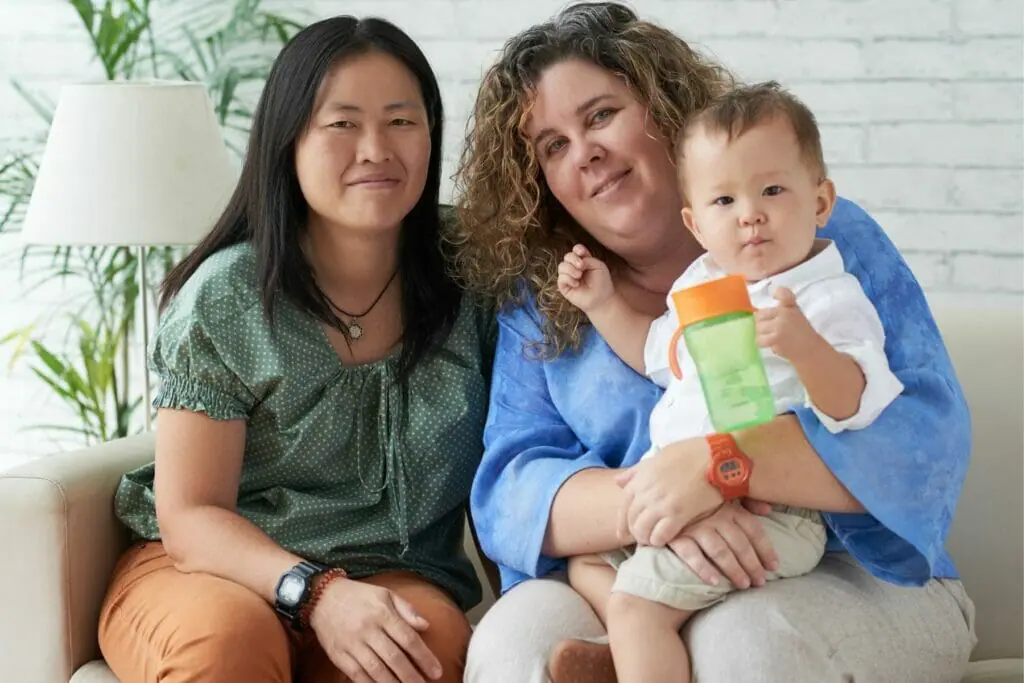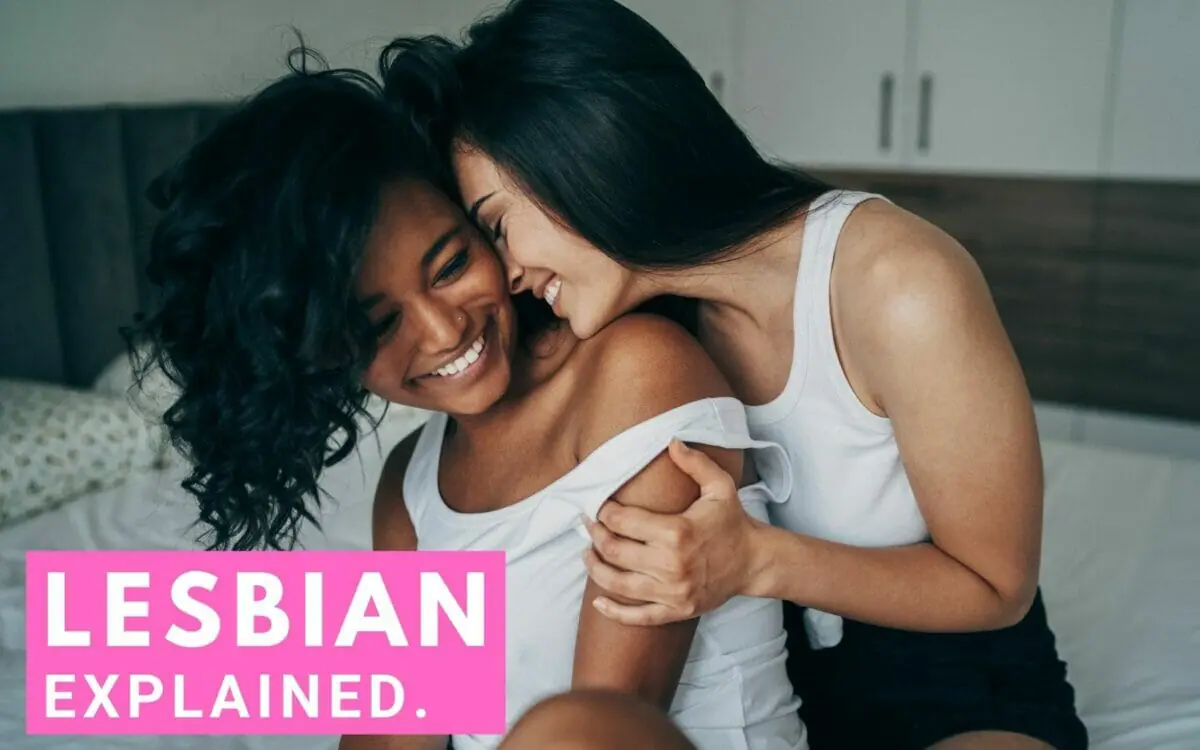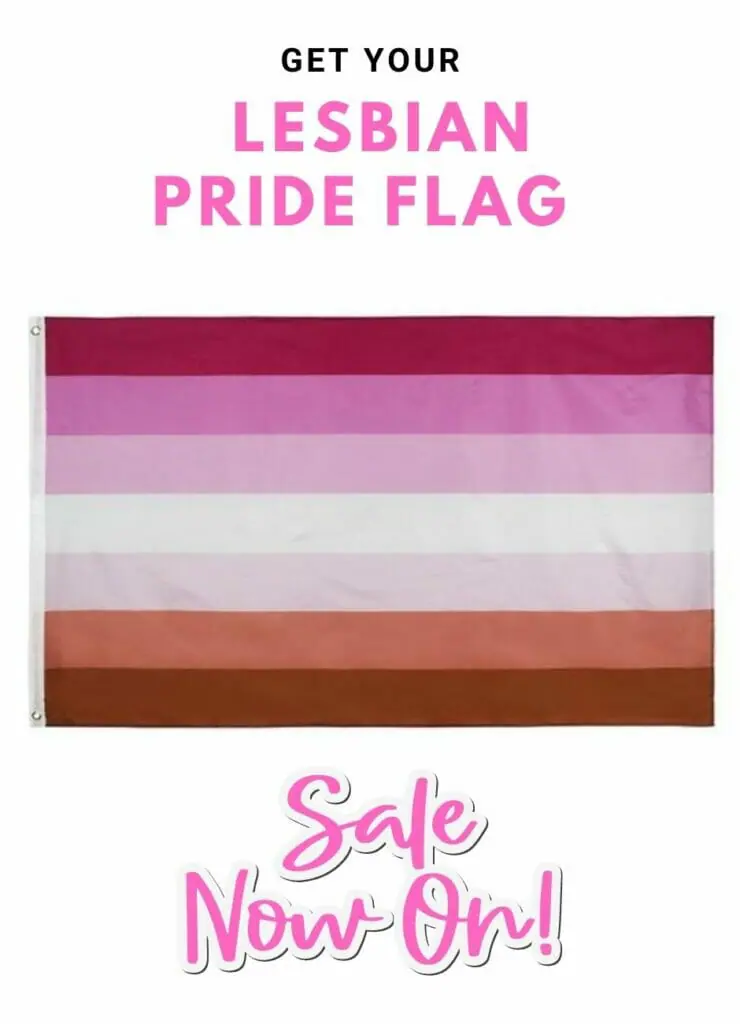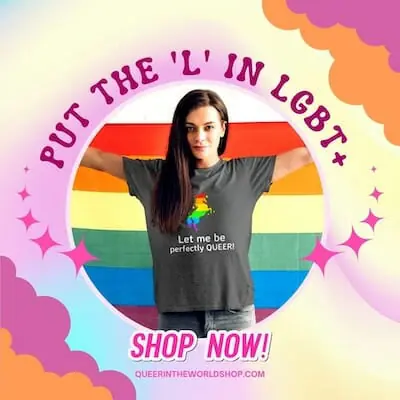There are many gender identities and sexual orientations that anyone can feel connected to or identify with.
More and more terms have been popularized over the years to represents the emotions and experiences of queer individuals and if you aren’t immersed in the LGBTQ+ culture or the queer community, you might not recognize a few sexual orientations and gender identities due to a lack of representation in mainstream media.
While lesbian is not typically one of the terms, we are still going to talk about what does it mean to be lesbian, explain what does the lesbian pride flag mean, and help you with some information to become a better ally to lesbian individuals and the queer community at large.

In this article we will cover...
What Does Lesbian Mean?
A lesbian is a woman emotionally, sexually, or physically attracted to other women. Women attracted to other women could either be lesbians, bisexual, pansexual, omnisexual, a straight women attracted to their friends, or more. To determine which of these you are, you need to take time and evaluate yourself carefully.
While some lesbians may use the term to describe themselves, others may refer to themselves as queer or gay. There are also those who prefer not to put any label on themselves.
Some lesbians say they knew about their sexual orientation while they were young. Others say they felt different, and many others come out lesbian when they’re much older. It isn’t unheard of for women to come out as lesbians in their 40’s, 50’s or even 60’s. it doesn’t matter when someone comes out as a lesbian – her identity and experiences are still valid and in no way up for debate.
What matters is that they take the time to understand and be sure about who they are. One significant difference between heterosexual and lesbian relationships is that a lesbian relationship may consist of two women while a heterosexual relationship consists of a man and a woman.
However, both kinds of relationships experience both ups and downs. Like all other relationships, there isn’t a set of defined rules you have to follow. There’s freedom for both partners to make their own rules for the relationship. If it helps, were have some hard-learned lesbian relationship advice to impart.
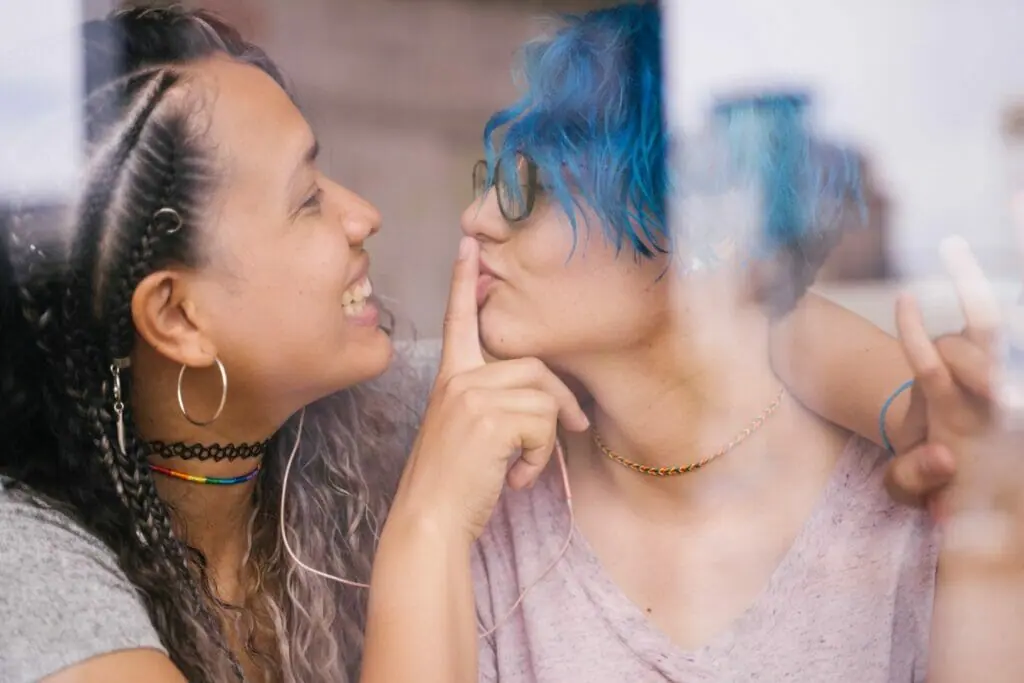
Lesbian Pride Flag Meaning
The first lesbian pride flag was the labrys lesbian flag, designed in 1999 by graphic designer Sean Campbell, a cisgender gay man, and distributed in June 2000 in the Palm Springs edition of the Gay and Lesbian Times Pride issue. The design includes a labrys, a type of double-headed ax, placed over an inverted black triangle, set against a violet background. Among its many meanings, the labrys was the weapon of choice for the Amazons of Greek mythology, a group of female warriors and hunters whose society was closed to men. It has been a symbol of empowerment used by lesbian feminists since the 1970s.
The inverted black triangle was the symbol worn by women considered asocial by the Third Reich (including homosexual females) who were condemned to concentration camps, similar to the pink triangle assigned to gay men. As gay men have reclaimed their symbol, many lesbians have also reclaimed this. The symbol on the labrys lesbian flag has set on the color violet, which has been associated with lesbians via the poetry of Sappho.
This flag is not widely used now, possibly because it was not created by a lesbian – but also because of concerns of its imagery rooted in the Holocaust. It is frequently used by trans-exclusionary lesbians or trans-exclusionary feminists, in part due to the Amazon’s mythology where the women would either kill their sons or return them to their fathers, with whom they would only socialize briefly in order to reproduce. As such, many lesbians today sought out a flag that is inclusive of trans women and the wider LGBT community.
The first ‘modern’ lesbian flag was designed in 2010 – the lipstick lesbian flag, which had six shades of pink and red stripes, one white one in the middle, and a red kiss printed on them. This flag was changed by removing the kiss and attracted more use as a general lesbian pride flag – however, even this pink lesbian flag has been accused of not representing lesbians who do not align with femininity and is even viewed as offensive by some.
As a result, in 2018, a different ‘orange-pink lesbian pride flag was proposed as the new “lesbian flag for everyone” by Tumblr blogger Emily Gwen. The new flag has different colors which are said to stand for (in order of top to bottom):
- Gender non-conformity
- Independence
- Community
- Relationships unique to womanhood
- Peace and serenity
- Love and sex
- Femininity.
Today there is no specific lesbian pride flag in use, and much like a gay man, many lesbians prefer simply to use one of the more inclusive gay pride flags, which is representative of the queer community at large.
When Is Lesbian Pride Day?
Awareness, visibility, remembrance, and celebration are all important in increasing the acceptance and recognition of queer identities and queer folx around the world.
By observing an international day for lesbians, it is easier for lesbians to talk to friends and loved ones – and to feel the love. It also helps foster awareness and increased sensitives from society at large.
So, mark your calendar and plan something special (even if it is just a social media post!) for April 26th, which is Lesbian Pride Day.
Other Lesbian Information Tp Help You Be A Better Ally
So, you know someone in your circle who is a lesbian and you claim to love them. However, the question to consider is: do you think you’re a good friend and a straight ally?
Being a good friend to the lesbians in your life requires you to acknowledge who they are and show them support in circumstances where they need it. Being a straight ally involves helping to dismantle stereotypes and render invaluable support to individuals in marginalized groups who may not possess the power, status, means, or opportunity to influence systemic and institutional change on their own!
You are amazing – and capable. Or you wouldn’t be hear researching what is means to be lesbian. So we are certain you can be both.
Most of the time, we limit our friendships to love. But we should also extend them to sexual identity. If your BFF is a lesbian, you might have an idea of what we’re talking about. While we love our friends in the lesbian community, we’re not always good friends to them.
Nevertheless, you still have time to support your lesbian friend. Here’s how:

Clear your head
Even if you don’t acknowledge it, you most likely have biases and prejudices that you should confront. It might be uncomfortable for you to realize it at first, but once you realize what they are, you will be able to confront them.
Confronting your biases includes educating yourself about what being a lesbian is. Remember that the LGBTQ community no longer uses derogatory terms such as ‘homo’ or ‘homosexual’. Lesbians prefer to use the term ‘gay’, ‘queer’, or ‘lesbian’ to describe themselves.
Some people like to make crude comments or derogatory remarks and jokes towards lesbians. If you hear such remarks against your friend or other people in the lesbian community, speak up against such prejudices and let them know it isn’t right to encourage or take part in it.
The same goes for any jokes that are at others’ expense, especially queer marginalized communities and misunderstood identities such as intersex, asexual, transgender, non-binary, and genderqueer. We are not here to be the butt of any jokes – and quite frankly, are sick of it. It is not – and never was – OK.
Most times, offensive material is circulated on social media or WhatsApp. Remember to tell people that are making such comments why it’s wrong to do that.
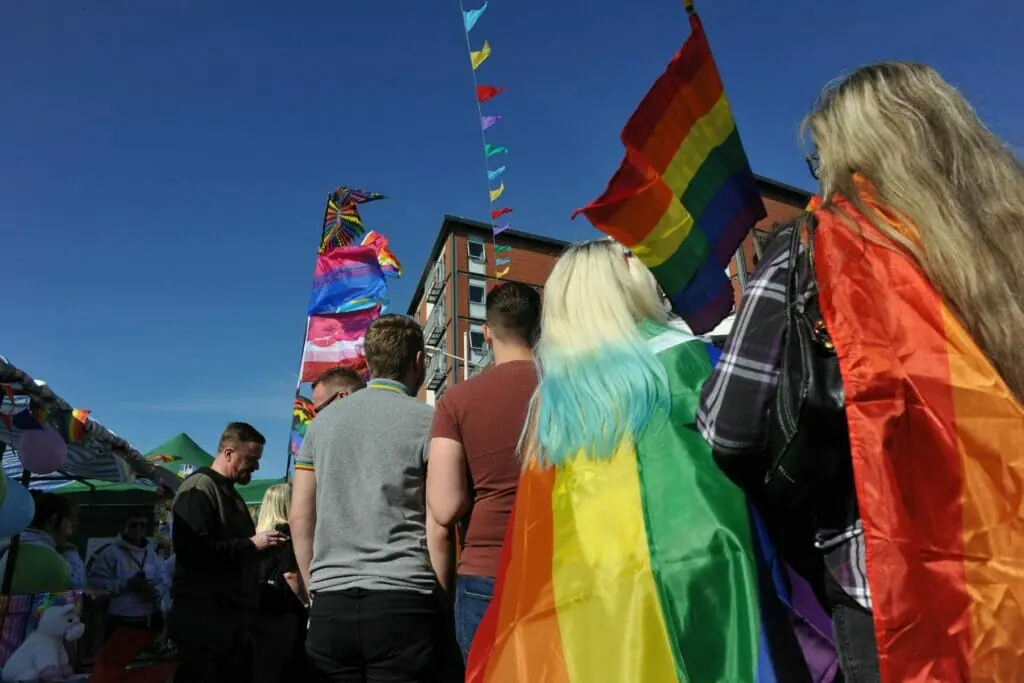
Be there for emotionally for your lesbian friends
Just like others in the LGBTQ community, lesbians sometimes face challenges with their identity or orientation. They may have to deal with issues like lack of acceptance, stigma, and getting through life without the emotional support from their families they need to tackle challenges.
Being there for your lesbian friends may be exactly what they need to move forward. Supporting your friend emotionally may look like hanging a rainbow flag in your front yard, or wearing an LGBT enamel pin to let people know you are an ally.
It could also mean joining your friend on their first Pride Parade (wearing a cute pride outfit obviously!).
Don’t treat them like someone different. Treat them like a friend
Even though you might be concerned about your friend, try not to treat them differently from how you would treat your other friends. Being a lesbian has nothing to do with being your friend.
Their sexual preference shouldn’t be an issue when it comes to including your lesbian friends in your social group. And, while you include them, remember that it’s better if they feel that you’re comfortable about their presence.
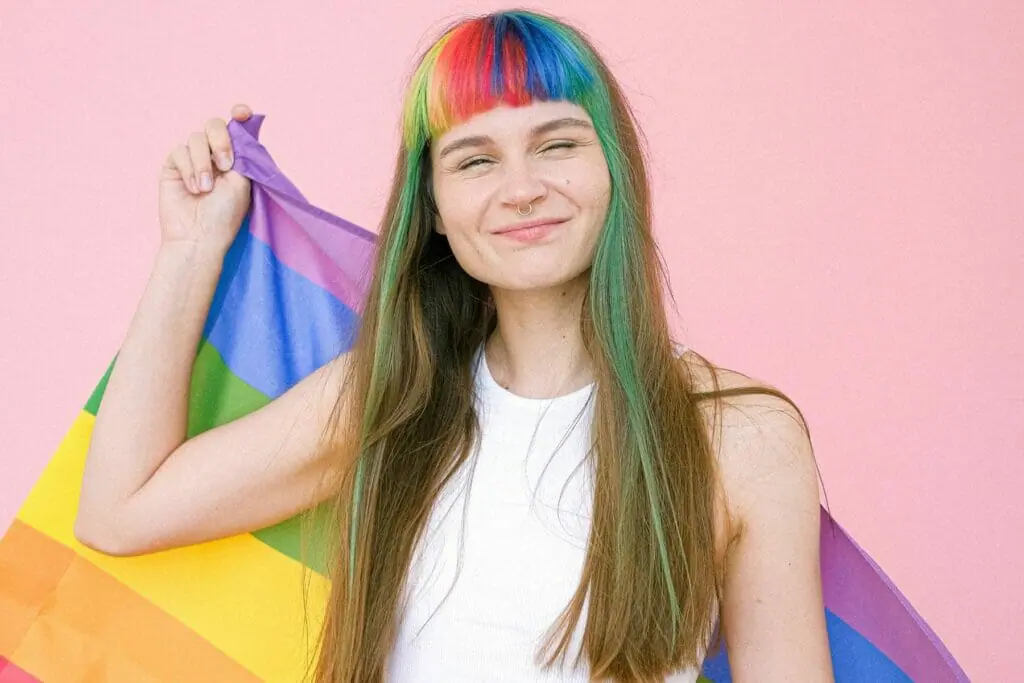
Listen patiently
Even if you’re tempted to, don’t give unsolicited advice. When your friend is talking to you about their problems and other issues they’re facing, listen actively so you can understand their experiences better.
Keep in mind that confidentially is key and unless they ask you to speak about it, it would be best not to.
Encourage your friend to seek professional help when they need to
Due to the challenges your friend faces, they might experience stress, anxiety, or sadness. These emotions might interfere with their ability to live a full life or get things done. Be there for your friend and ask them to see a mental health professional.
If you can, escort them to the appointment and give them the emotional support they need to get help.
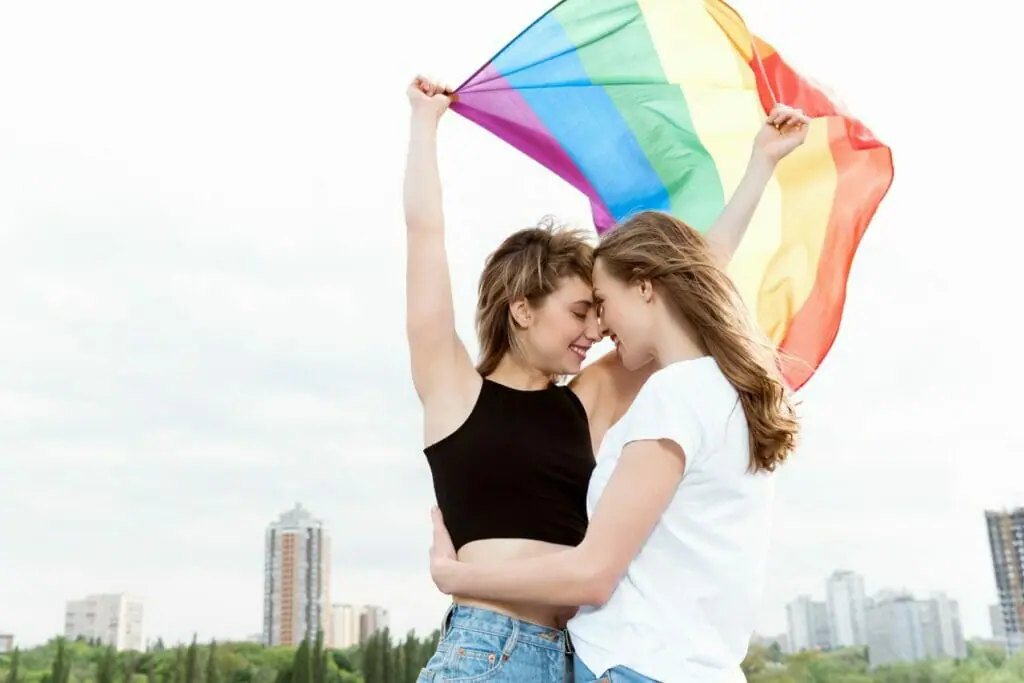
Don’t assume people’s sexual orientation
Just because some is in a committed relationship, or even married doesn’t mean you should assume their sexual orientation. A lesbian could be questioning yet still be in a heterosexual relationship. In addition, you should be aware of someone’s preferred pronouns. If you don’t know, you should ask.
Don’t automatically assume that someone prefers she/her pronouns because they’re in a lesbian relationship.
Educate children about families with two moms
If you have children that are in constant contact with your friend and their partner, educate them about such relationships. They might question why a friend at school has two moms.
Explain the situation to them in a way they understand and tell them it’s ok to accept others as they are.
